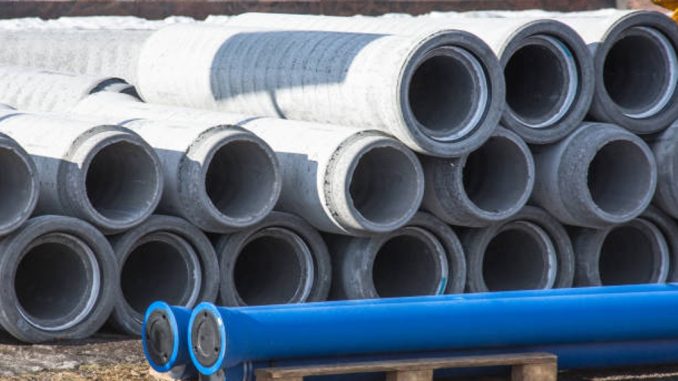
Cement pipe coating and cement pipe lining are popular methods for protecting steel pipelines from internal and external damage.
The first pipe to have its interior lined with cement was laid as long ago as 1922 in Charleston, South Carolina. Since then, the practice of lining the inside or outside of pipes with cement has become commonplace around the world.
Cement coated and lined pipes are most frequently used to carry water. Cement is harmless to humans, meaning that it can safely come into contact with potable water.
Other materials for lining the interior of a pipe transporting water for human consumption – such as composites – have to undergo stringent testing before they are certified as suitable for use with drinking water.
Safety is obviously important, but it is not the sole reason as to why cement is such a popular pipe coating and lining. Here are some other benefits.
Cement lining protects pipes from internal corrosion
The strength of steel makes it a popular material for pipelines running underground and subject to the pressures that brings, such as water networks.
Steel though has one weakness, especially when used to transport water – it corrodes. A cement lining applied to the interior of a steel pipe can help prevent this.
The lining forms a protective barrier between the water in the pipe and the steel wall, reducing contact between the two and susceptibility to corrosion.
Another reason cement lining is so popular is because of the pH scale. Cement or mortar creates a highly alkaline area where it comes into contact with water near the pipe wall.
As well as water networks, cement lined pipes are used for cooling, firefighter and seawater systems – all of which are open to corrosion.
Cement coating protects pipes from external damage
Cement coated pipes are found less commonly than linings. They are used to provide a layer of protection to pipelines having pressure exerted upon then, such as underground or offshore.
A cement coating prevents the steel inner becoming damaged or pierced, helping to reduce the prospects of a cement coated steel pipe repair needing to take place.
The thickness of the cement coating is based upon the conditions the pipeline is operating under. The more extreme the conditions, the more cement.
With its deployment in sub-sea environments, cement coated steel pipe are also found in the natural gas and petroleum industries.
Other types of cement protection offered to pipes
Cement in its purest form provides strong protection to steel pipes. That has, however, not stopped human meddling in an attempt to make cement an even more effective coating.
Take prestressed concrete cylinder pipe for example. Developed in the 1940s, PCCP consists of a concrete core, a thin steel cylinder, high tensile prestressing steel wires and a mortar outside coating.
Combining the compressive strength of concrete with the tensile strength of steel, PCCP was installed mainly across North America for high capacity, high pressure waterlines.
It handles both extreme internal pressures and high external loading, making it suitable for installation underground.
When manufactured to the highest standards, PCCP provides a cost-effective, easy-to-install and long-lasting pipe type which is reliable and hard wearing.
Unfortunately, PCCP safety standards were lowered in the 1970s when structural designs were changed in an attempt to reduce costs.
This has led to a series of catastrophic failures from the 1990s onwards, caused by thinner prestressing wheels suffering from corrosion and leading to spectacular blowouts of PCCP lines.
PCCP fabricated below specification in the 1970s is so widespread in the United States that the Environmental Protection Agency and the American Water Works Association have put the cost of repairing and reinforcing the existing network at more than $40 billion.
The experience of PCCP is a glowing example of why change something which works? Because when it comes to cement lined and cement coated pipes, the benefits are there for all to see.

Leave a Reply